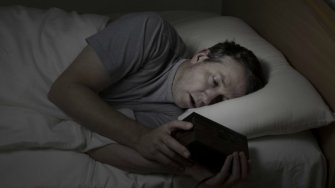Want to fall asleep faster? Try this 5-minute technique

It has happened to most of us: being hit with a slew of worries, stresses, and knowledge of what we have to do tomorrow just when we want to go to bed. The resultant strain is made worse when we realize that each moment spent thinking is one less to sleep in. The problem is familiar to the one-third of Americans who report difficulty falling asleep more than one night a week. As sleep deprivation can be the cause of a myriad of health problems, the search for a good night’s sleep is one that takes on tremendous importance.
One study has a surprising solution to this common problem.
Participants aged from 18 to 30 attended a sleep lab and were asked to complete one of two tasks before going to bed. Either they were asked to spend five minutes writing a comprehensive to-do list of all the things they needed to do tomorrow and over the next few days, or spend the same time writing a list of all of the things that they accomplished that day.
The participants carried out the task then went to bed. Measurements were taken on how long it took them to get to sleep. Those in the “to-do list” group took an average of 15 minutes to fall asleep, while those in the “accomplishments list” group took an average of 25.
It was also seen that the more detailed and complete of a “to-do” list that a subject made, the faster they fell asleep. This observation drove the researchers to propose that there was some sort of “offloading” phenomenon; the action of detailing what needed to be done was able to put the mind to rest. The opposite effect was noted in the “accomplishments” group, however. The more detailed a list they made, the longer it took them to fall asleep.

If you are reading this on a smartphone before bed, you might have the same problem.
So, should I start making to-do lists before I go to bed?
It must be said the study was rather limited. It was done with a mere 57 participants, and none of the participants reported having chronic sleep problems. No baseline level for how long it typically took them to fall asleep was ever established, so it remains possible that writing a list made it harder for them to fall asleep. It can be said, however, that of the two methods the higher potential for helping people fall asleep lies with making a to-do list.
Difficulties when trying to fall asleep are some of the most common issues in the world. For these insomniacs, relief might be found in a simple five-minute routine. While more research is needed to determine if and why writing tomorrow’s to-do list helps people fall asleep faster, I for one am going to start making my to-do lists the night before.





